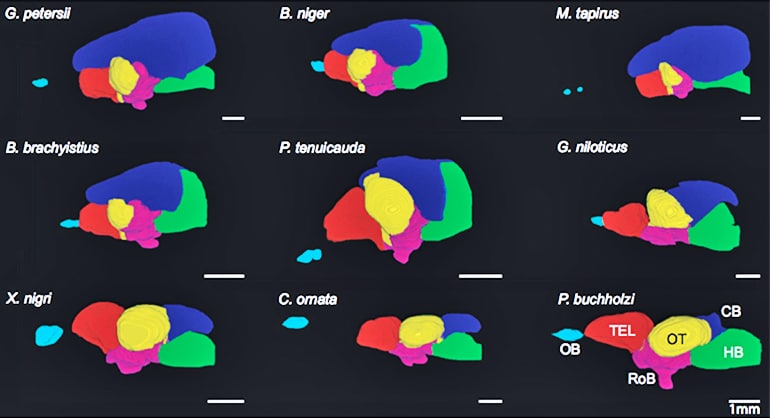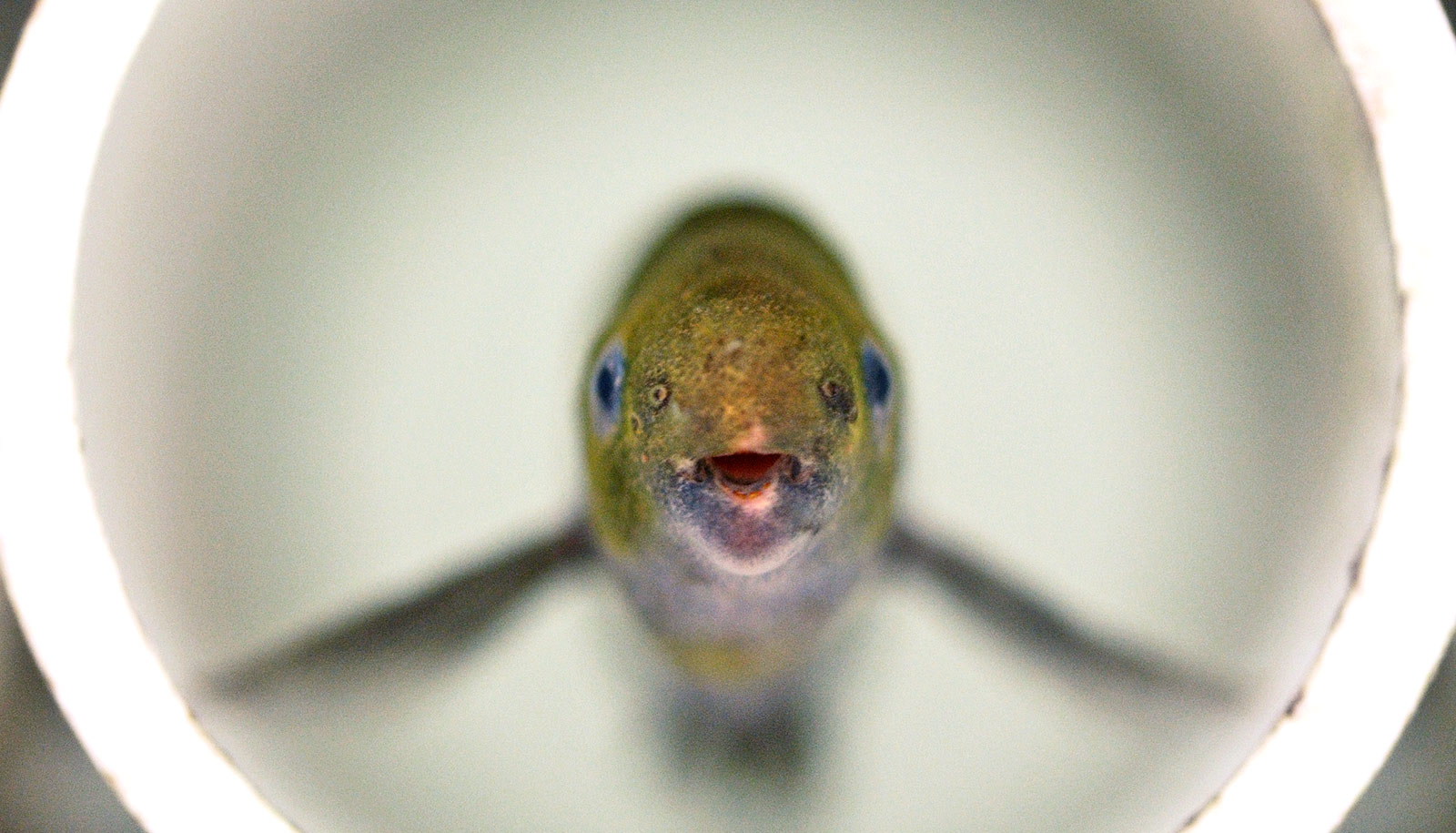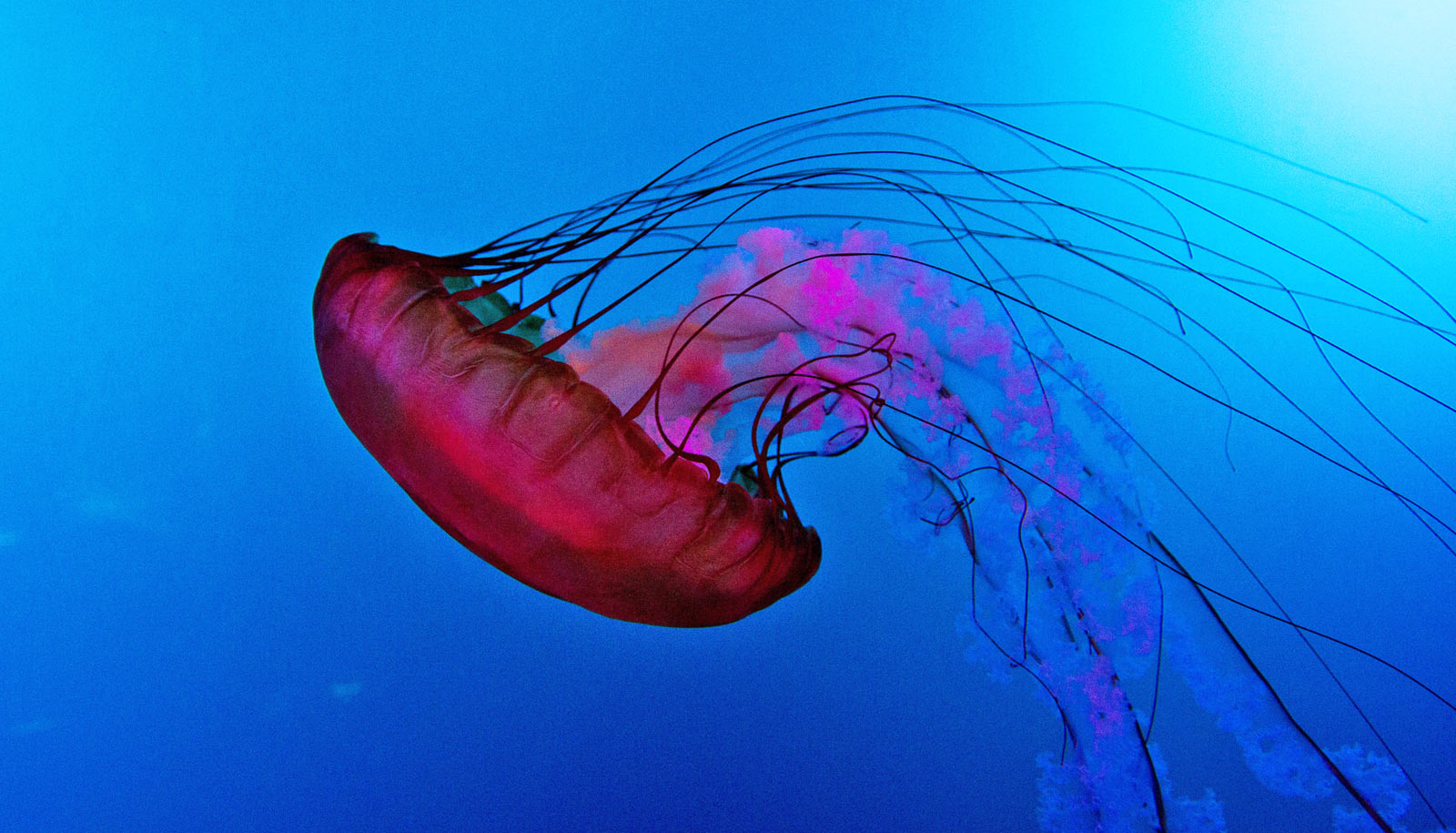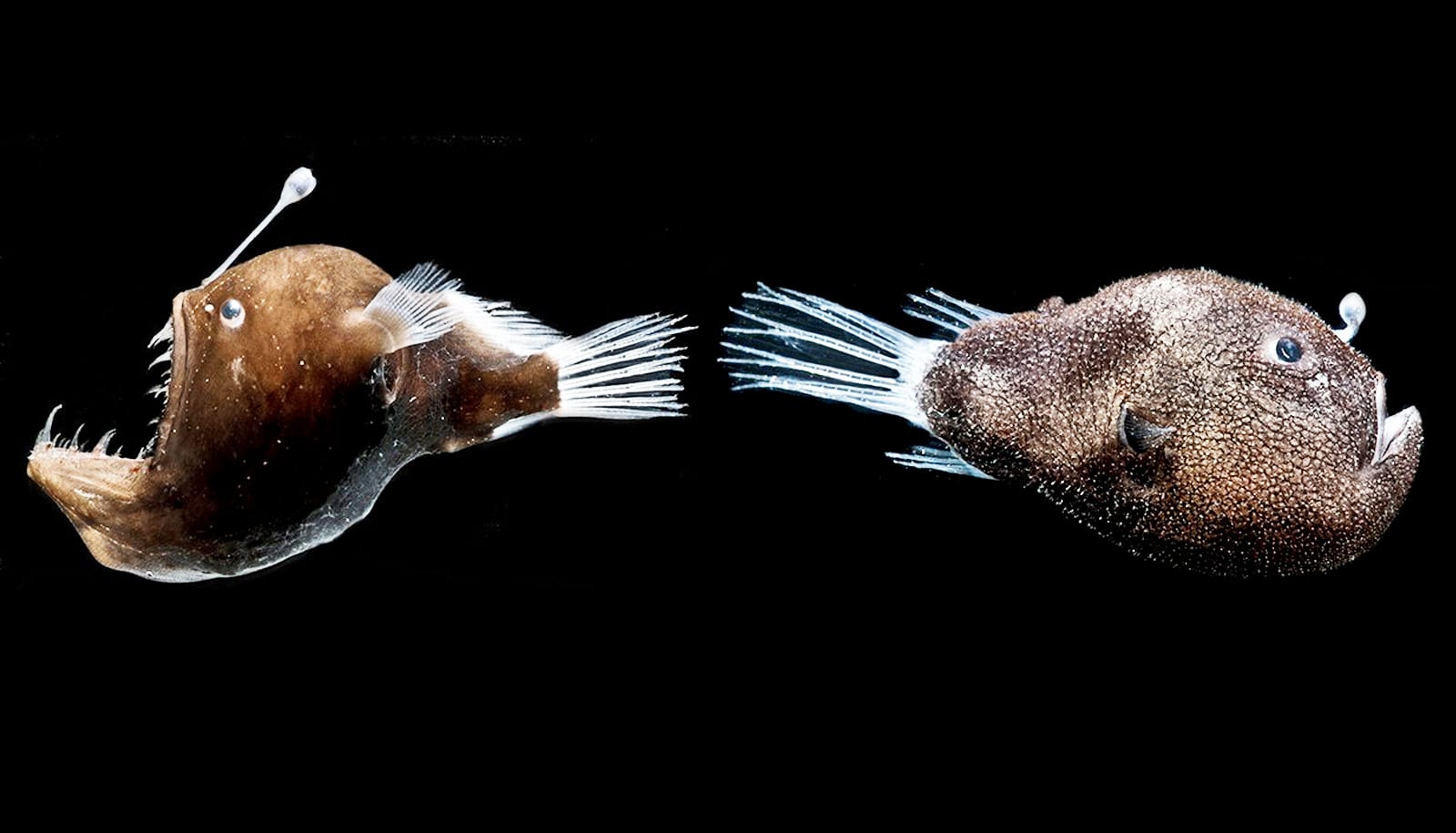Researchers have mapped, in extremely high detail, the regions of the brain in mormyrid fish, known for having a brain-to-body size ratio similar to humans.
They report that the cerebellum is bigger in members of this fish family compared to related fish, and this may be associated with their use of weak electric discharges to locate prey and to communicate with one another.
There’s a great deal of variation in the size of mormyrid brains and these differences provide an opportunity to look at what’s behind the bulk.
Cerebellum sizes
The size finding itself is not particularly surprising for those who follow the fish, says Bruce Carlson, professor of biology in the School of Arts & Sciences at Washington University in St. Louis.
“It had almost become a truism,” he says. In mormyrids, at least, the thinking went, “big brains mean big cerebellums.”
Instead, the researchers are excited about how their new measurements can help illuminate longstanding questions in neuroanatomy. As brains get bigger, do all regions of the brain scale up in a predictable way? Or does natural selection act independently on separate regions of the brain—such that certain parts of the brain become enlarged in animals that have extra reasons to use them?

“When you look at human brains, the cerebral cortex has become this giant part that has engulfed the other regions of the brain,” says first author Kimberley V. Sukhum, who recently completed her PhD in biology and now works as a postdoctoral researcher at Washington University School of Medicine.
“We see something similar with the cerebellum in the mormyrids,” Sukhum says. “But it wasn’t known how this region had gotten so big—or even if all of the species had a very big cerebellum.”
Compare and contrast
There are more than 200 species of mormyrids. Researchers have studied some extensively because of their special electrosensory systems. They’ve long sought answers as to how these fish use electrical pulses for communication and finding their way. Researchers have largely ignored other species in the mormyrid family.
For this analysis, Carlson and Sukhum chose to compare individuals from six mormyrid species, one species that was considered a close relative, and three other distantly-related species.
Sukhum and Carlson used micro-CT technology to collect full scans of the soft tissue of the fishes’ brains, then identified the landmarks that delineated distinct regions within them. The 3D maps they created allowed them to measure and compare the volume of individual regions of the brain with great precision.
Across all of the fish that they compared, they found that as total brain size increased, the sizes of individual regions within the brain also increased in a predictable fashion. However, with the mormyrids, they found that total brain size could not fully predict the size of the cerebellum.
In other words, electric fish had significantly bigger cerebellums than fish with no zip. Electric fish also had bigger hindbrains than their related, non-electric cousins.
‘Mosaic evolution’
If one part of the brain can be shown to size up or size down independent of other parts of the brain, then neuroanatomists say this is an example of something called mosaic evolution. Mosaic shifts are thought to be relatively rare, and much of the current research on this topic focuses on identifying the kinds of situations in nature where such shifts occur.
“Here, we see the mosaic increases only in the mormyrids, and not in the outgroups,” Sukhum says. “And one of the things that we see in the mormyrids and not the outgroups is the electrosensory system. There is a potential relationship between these two things.”
Some of the mormyrids that they measured had extremely large brains—up to three times bigger than the smallest-brained mormyrids in the study. Despite this difference in total size, there was no evidence of mosaic changes in the cerebellum within the group. This is evidence that mosaic shifts are not just the result of evolving a big brain. Instead, the shifts are likely related to the evolution of novel traits, such as the electrosensory system.
The study can’t say for sure why mormyrids have such big cerebellums—only that they do.
But Carlson has a hunch. He thinks this part of the brain might be doing the lion’s share of the mormyrid’s work with motor planning, and also with how the fish anticipates the sensory feedback it will receive as it moves about and sends out electrical pulses.
“There’s a lot more planning and consequences to deal with than for your average fish,” Carlson says.
The research appears in Current Biology.



